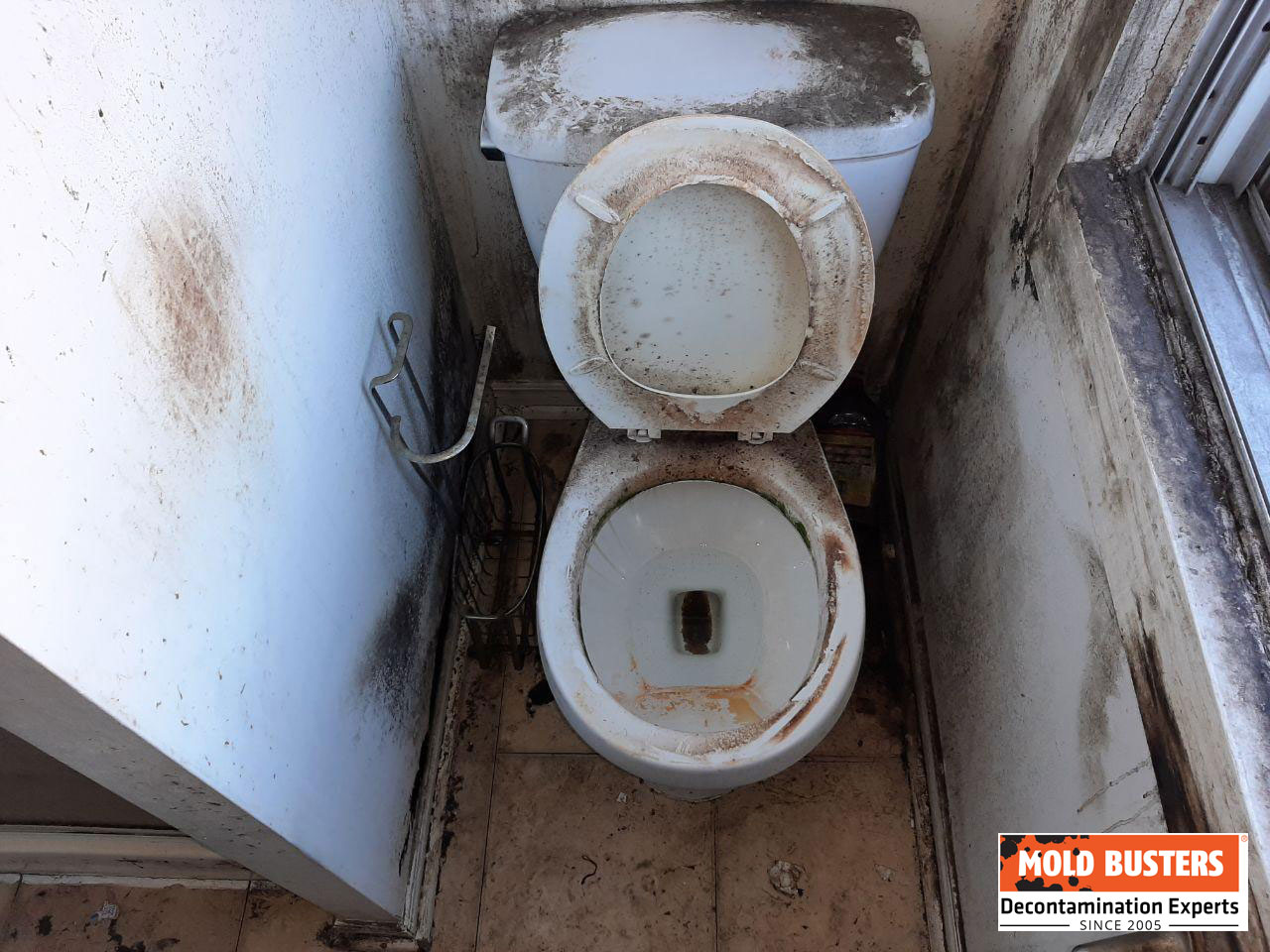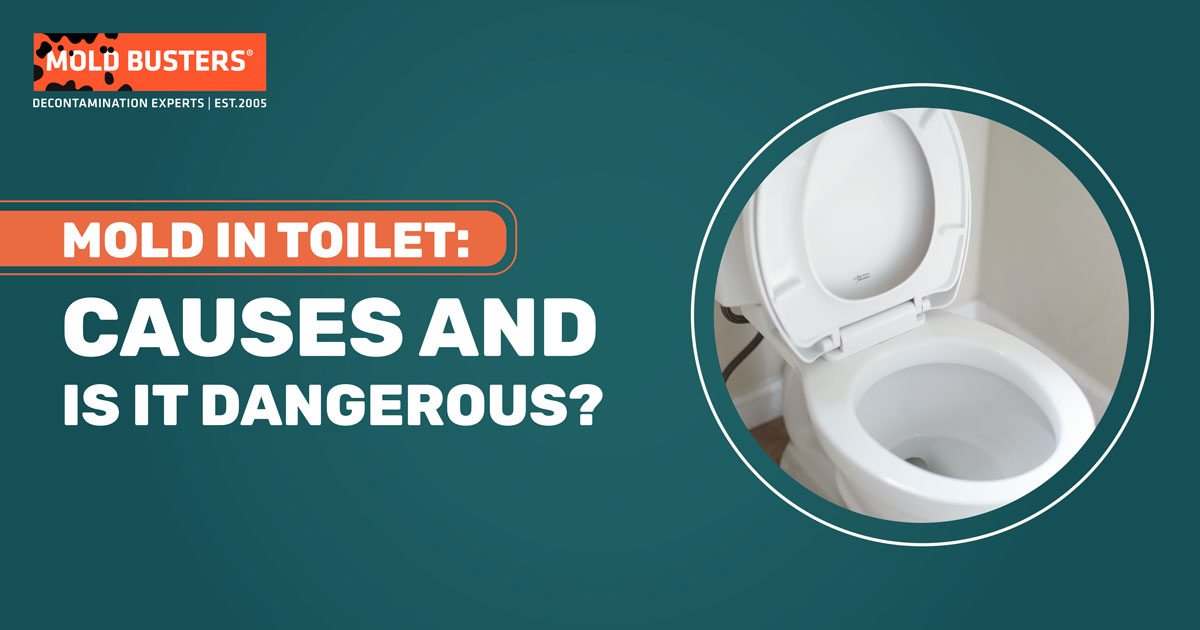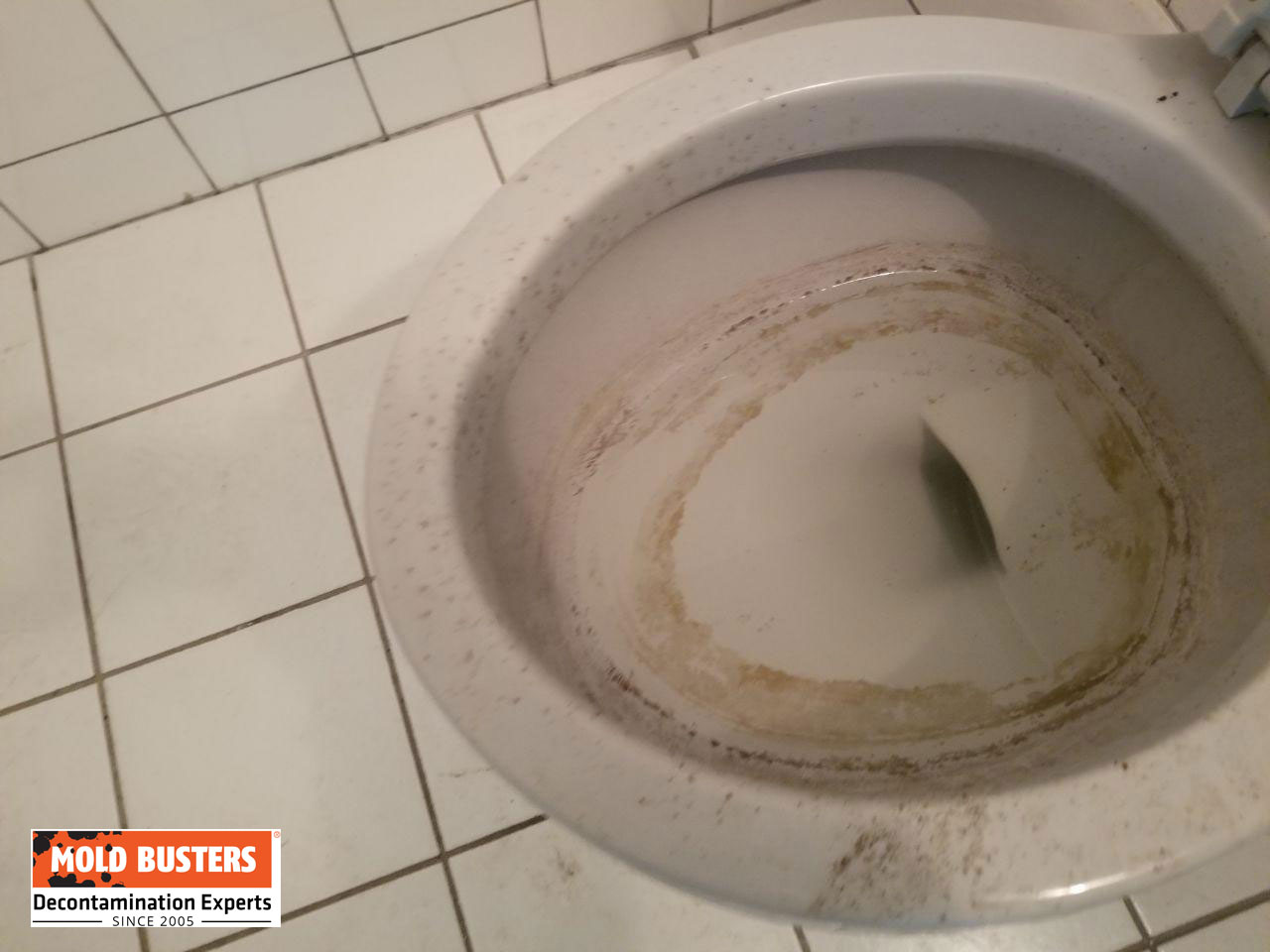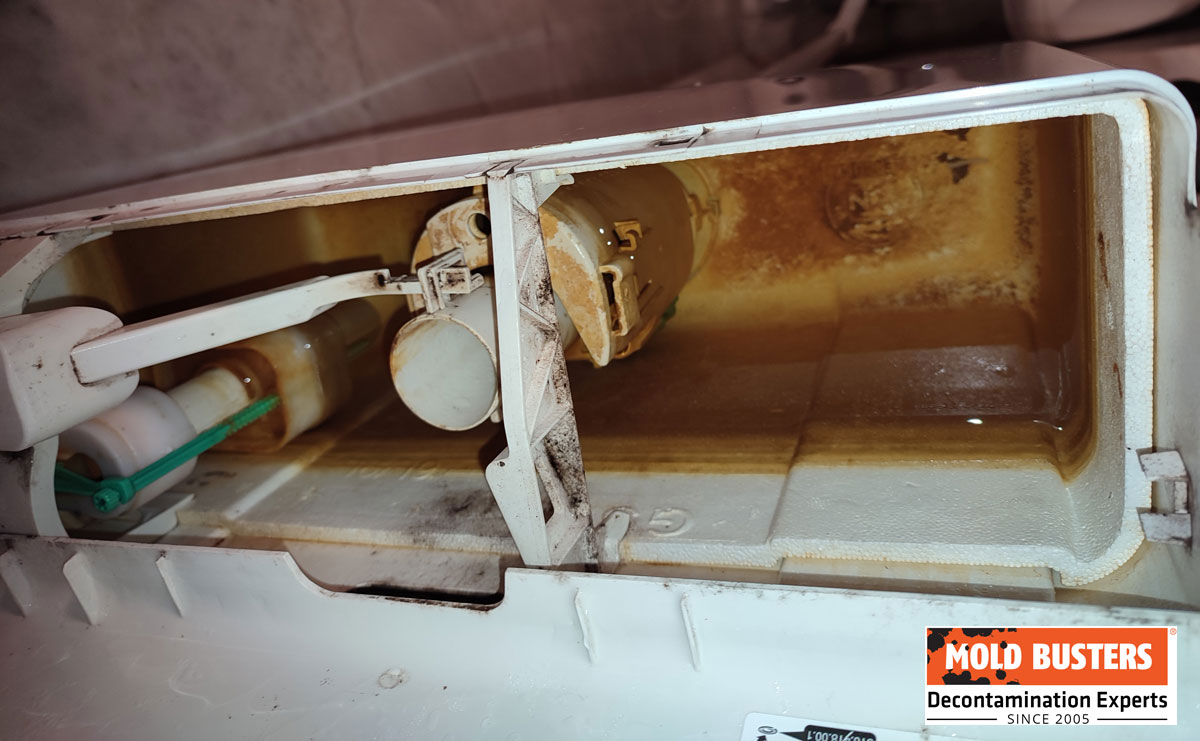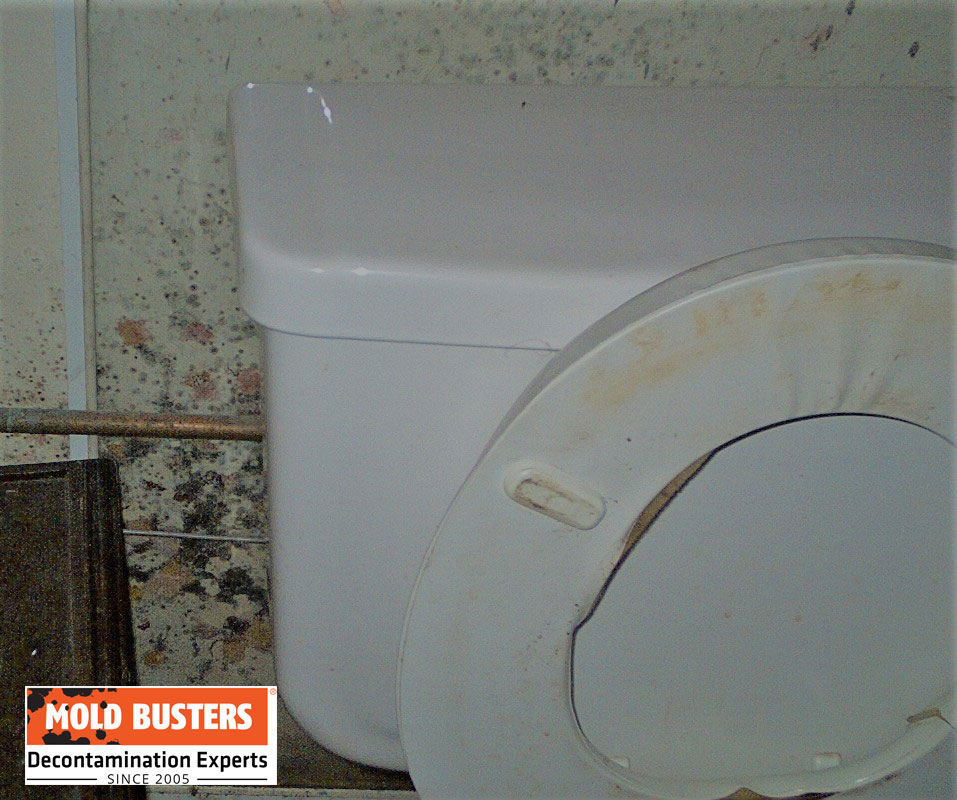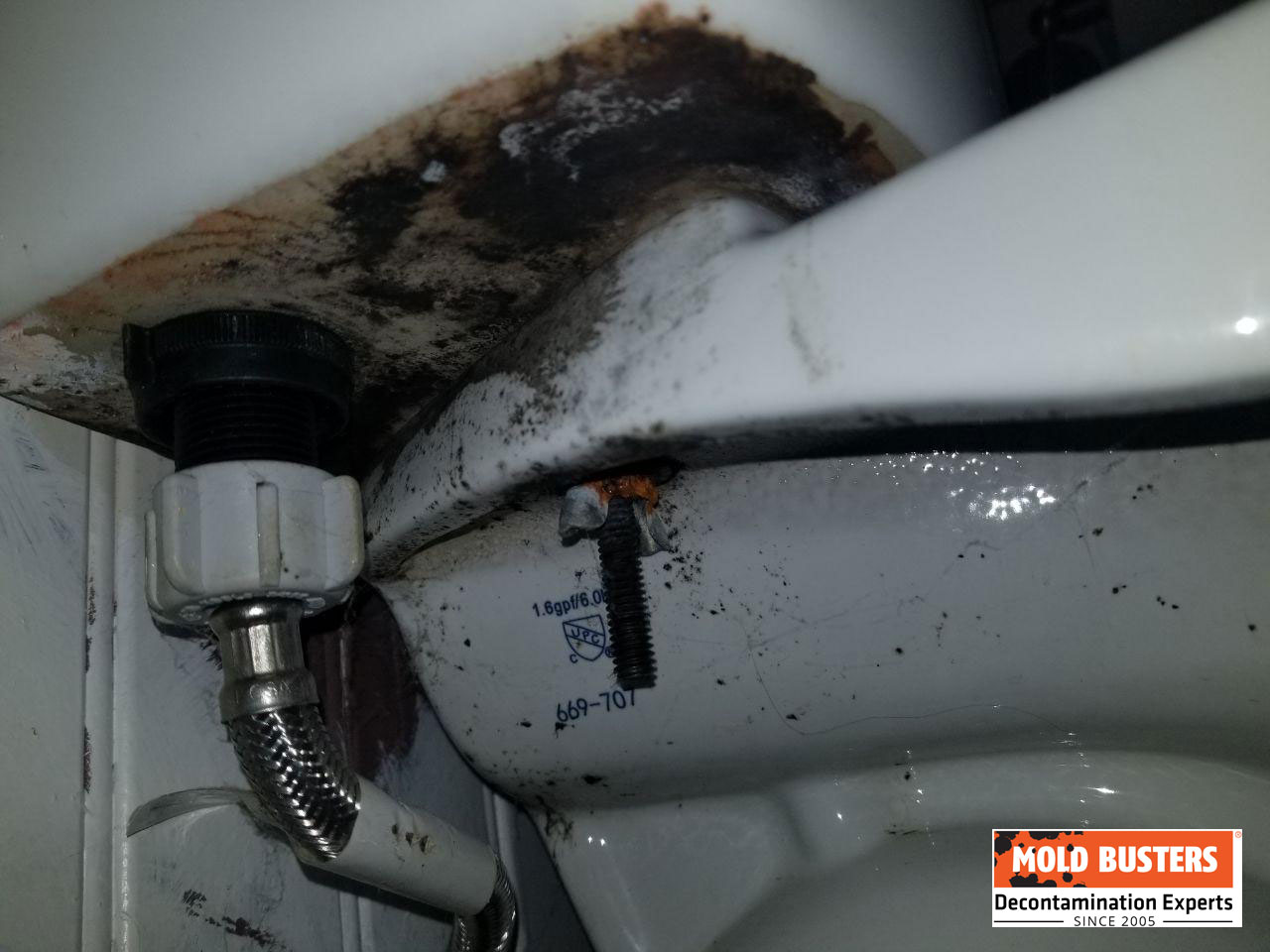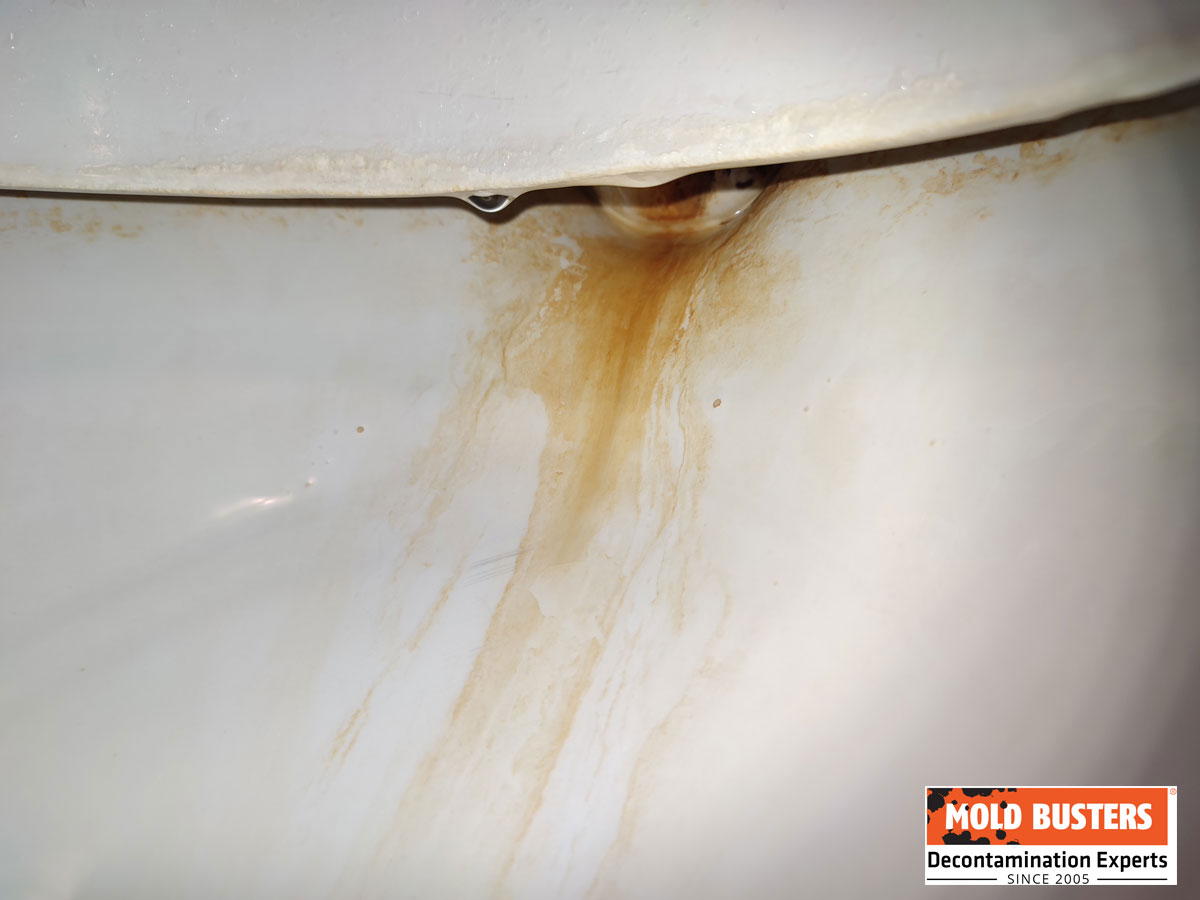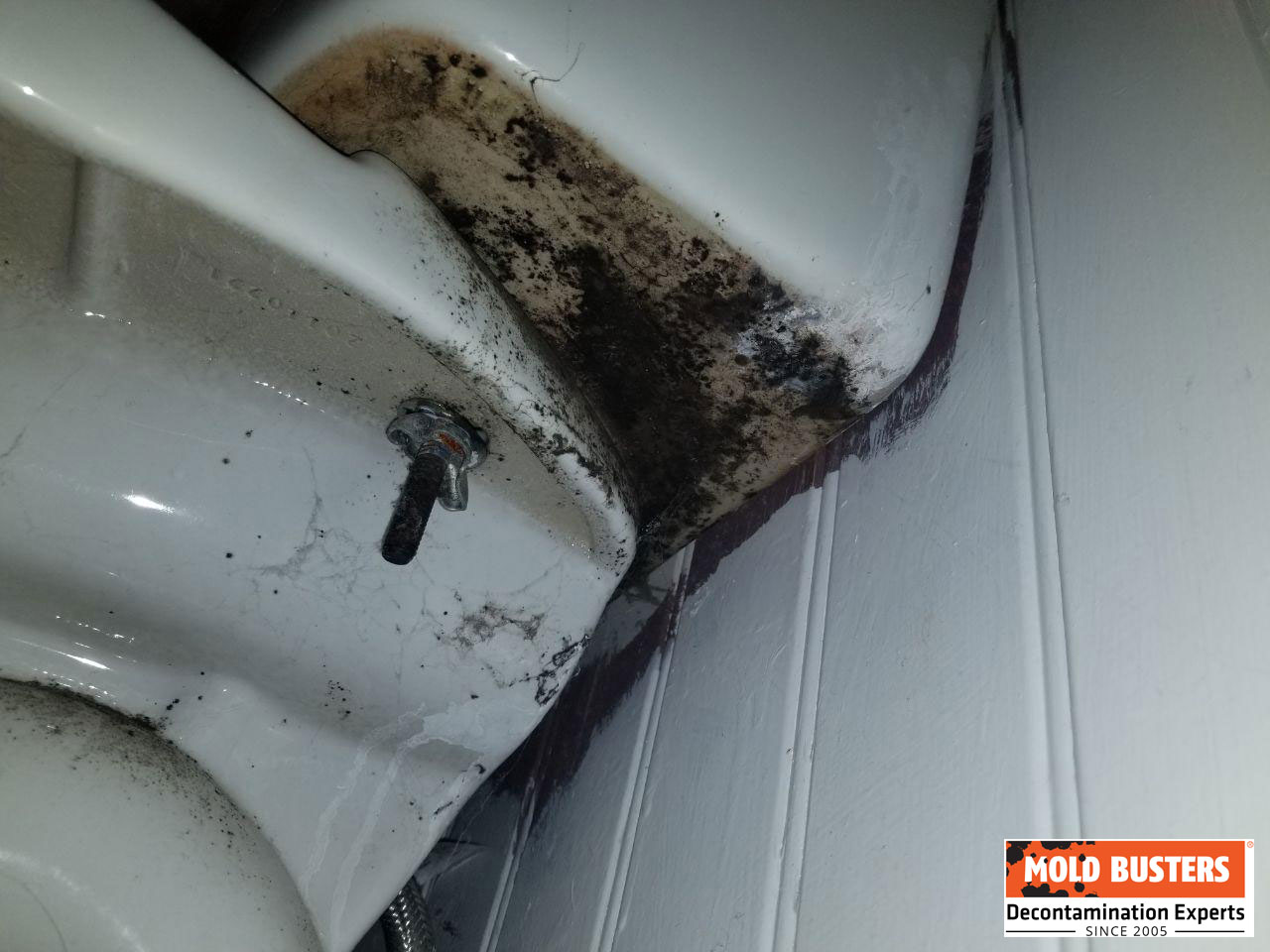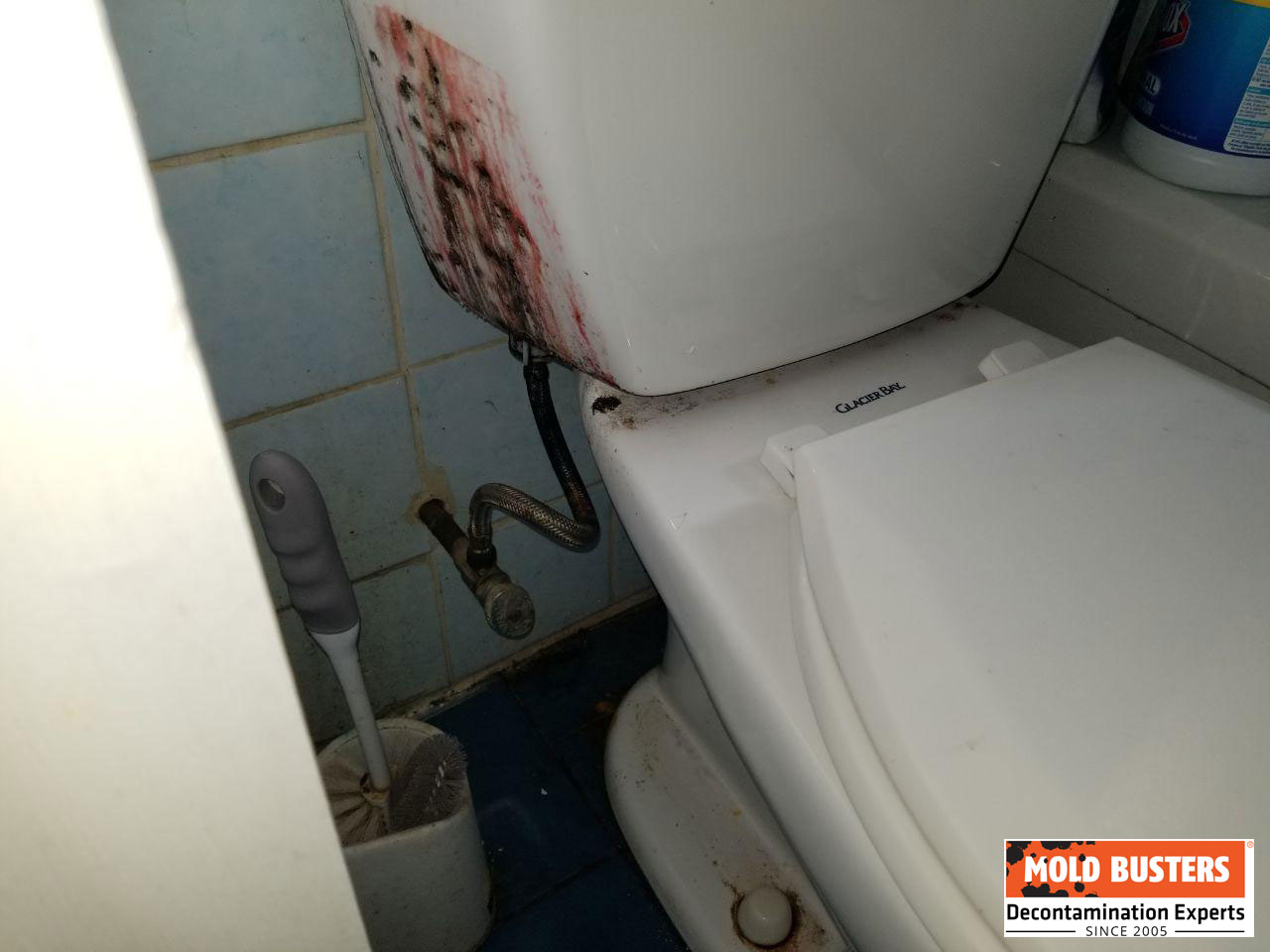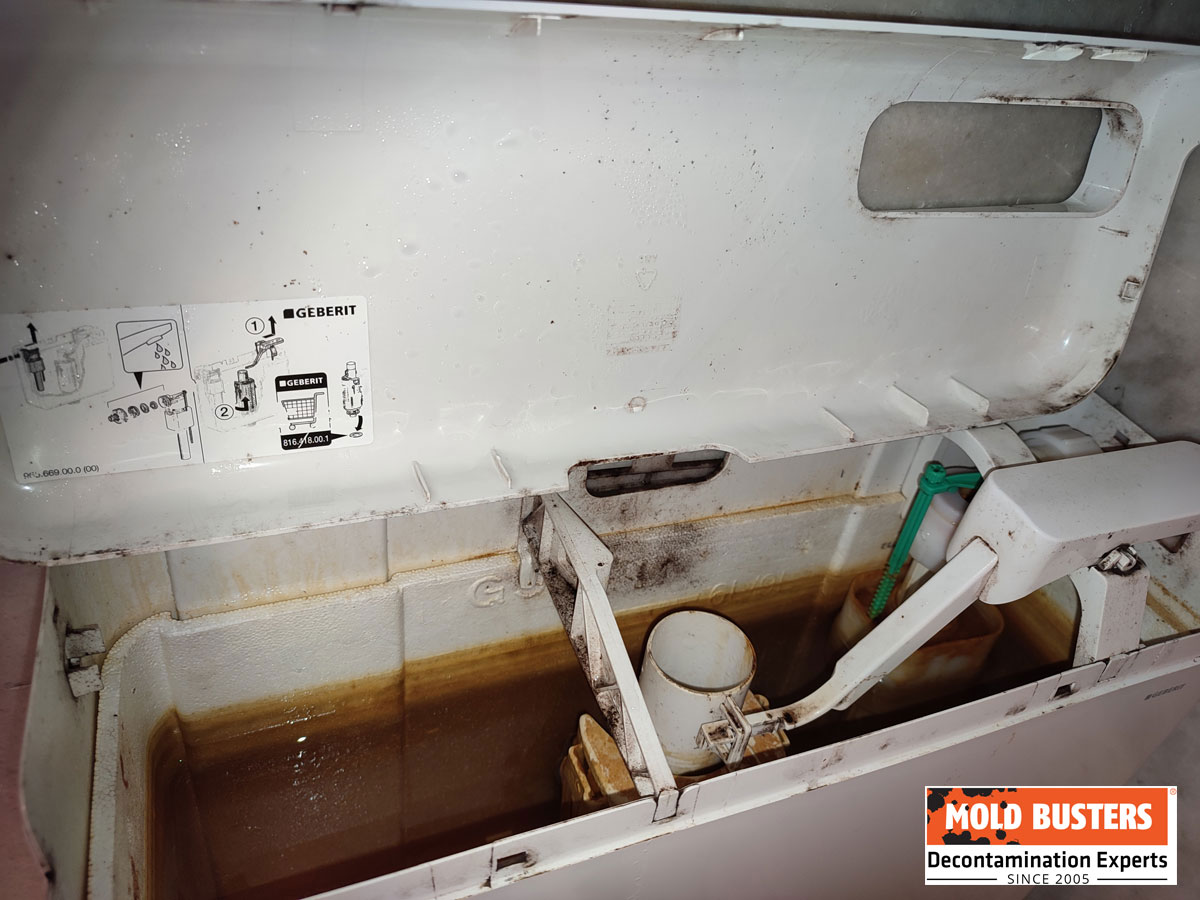Mold in Toilet
Your relief zone could turn out to be a nightmare. The home toilet meant for managing human waste is one. When mold takes over, it can become a different experience.
You’ve probably been away for a while, and on getting back home, you lift your toilet lid and find a ring of mold in the bowl. While this irritates you, it could also discourage you from using the toilet at that moment. It can even lead to anxiety for those who already have the experience of mold growth.
You can find mold growing inside your toilet tank and in other areas around the toilet. At this point, you may be pondering on what to do. The first thing is to understand better mold in the toilet – what it is and how to deal with it.
Worried About Mold in Your Toilet? Get a Free Inspection!
Mold in toilets can be a hidden hazard, often growing in damp, dark areas like the bowl, tank, and under the rim. Don’t let it go unchecked! Contact Mold Busters for a free virtual mold inspection. Our experts are ready to provide you with a comprehensive assessment and a plan to tackle any mold issue, ensuring your home is safe and healthy. Act now to protect your space!
Contents
- What is toilet mold?
- What causes mold growth in toilets?
- What type of mold can grow in toilets?
- Is mold in the toilet dangerous?
- What does mold in the toilet look like?
- How to identify mold in the toilet
- How to prevent mold growth in the toilet
- How to Remove Mold from Your Toilet
- Frequently Asked Questions (FAQs)
What is toilet mold?
Toilet mold is a tiny particle of fungus growing inside your toilet. Mold produces spores, the microscopic cells that spread through the air, water, and insects. These spores act like seeds, forming new colonies of mold when they are in favorable conditions.
What causes mold growth in toilets?
Every toilet has the perfect conditions for mold growth – moisture, nutrients (food), and a suitable place to grow.
Several reasons can make your toilet become a breeding ground for mold. If your toilet has been left unused for a couple of days, then don’t be surprised to see mold growing in it. Likewise, your toilet bowl and tank can grow mold because they are often dark and humid.
Nobody ever wants mold to grow in their toilet or sit there for a long time. The fungus can be a threat to your health, even if you’re in a good health condition. However, let’s see how mold thrives in each compartment of the toilet.
If you suspect mold in your toilet, it’s important to take immediate action. Not only can mold cause structural damage to your home, but it can also lead to serious health issues such as allergies, asthma, and other respiratory problems. If you’re located in Montreal, you can rely on our mold removal services in Montreal for comprehensive solutions.
Mold in toilet bowl
When your toilet bowl is left unused for a couple of days, it can become a perfect environment for mold to grow. The stagnant water allows mold to thrive inside the bowl.
Why is Mold Growing in Toilet Bowl?
Mold thrives in damp, dark environments, making your toilet bowl an ideal breeding ground. Factors such as infrequent cleaning, high humidity, or a leak can contribute to mold growth. Understanding the cause is the first step in preventing mold in your toilet bowl.
The lid also contributes to mold growth inside the bowl. When covered, it introduces darkness to the bowl. Then the fungus starts to grow in the absence of chlorophyll that comes from sunlight.
Reduced flushing also stops the passage of chlorination that helps destroy mold occurrence. The bowl thus becomes a perfect condition for mold to flourish.
Mold developing in the toilet bowl below the waterline can indicate that your tank is infested with mold. It could mean your water seal is broken, resulting in a leak from the water inlet.
Remember, mold can grow anywhere there is moisture and a food source, including your toilet. If you’re in Ottawa, consider our mold removal services in Ottawa to ensure your home is safe and mold-free.
Mold in toilet tank
The mold that grows inside your toilet tank can be a serious problem. Due to persistent darkness and high humidity, the tank becomes a perfect place for mold to develop. If the tank is long-abandoned, mineral deposits can also build up around its walls as food for mold.
If you’re unsure about the presence of mold in your toilet or anywhere else in your home, we offer a free virtual mold inspection. This service allows you to connect with our experts who can assess your situation and provide recommendations, all from the comfort of your home.
Mold in resin toilet seat
Mold growing around the resin toilet seat is relatively uncommon and often caused by improper cleaning. This leaves the toilet seat in high humidity levels that allow fungi to crawl under it.
Mold around the toilet base
If your toilet is in good condition, it is seldom to find mold growing around its base. Leaks around the base usually trigger mold growth in this area. Then, the fungus begins to develop around the base, right above the leaks.
Mold under the toilet rim
The shade and humidity in the underside of the toilet bowl are an ideal place for mold fungus to thrive. Even when using a disinfectant, you may still find it difficult to clean the brown or black discolorations under the rim. It could be that the tank is feeding mineral deposits or organisms into the bowl.
Black Rim in Toilet Bowl
A black rim in your toilet bowl is often a sign of mold or mildew. This can be caused by infrequent cleaning or high humidity in your bathroom. Regular cleaning with a mold-killing solution can help to prevent this issue.
Brown Gunk Around Base of Toilet
Brown gunk around the base of your toilet is often a sign of a leak, which can lead to mold growth if left untreated. It’s important to address this issue promptly to prevent further damage. If you’re unsure how to proceed, consider consulting a professional plumber.
What type of mold can grow in toilets?
Different mold species can grow in every toilet, and your home toilet is not free from the attack. The types of mold listed below are liable to thrive in any toilet.
Black mold in the toilet
With a couple of different types of black mold, some varieties will only exist on porous surfaces. Hence, you won’t see them on the smooth surfaces of porcelain toilets.
Applying bleach will temporarily remove black mold from your toilet. You will discover that it will resurface after some time. The reason is that the spores reproducing this mold genus floats in the air and can replicate effortlessly in a damp, dark, closed toilet system.
You can easily spot black mold inside and under a toilet tank. Black discoloration shows the likeliness that black mold is growing in your toilet tank.
Pink mold in the toilet
The commonly known “pink mold” is a pink stain that is not a mold or mildew. It is an airborne or waterborne bacteria called Serratia marcescens. It grows in a variety of colors, including bright orange and red.
Like mold, it thrives in warm, dark, wet conditions, such as toilets, shower, bathtub, or sink. It feeds on mineral deposits as well as shampoo or soap residue.
Red mold in the toilet
Red mold is one of the lesser-known mold types that exist, and it is also found growing in the toilet. While this mold is unsightly in its initial www, it appears reddish as it grows.
Brown mold in the toilet
Brown mold is usually not common in many toilets. It takes the same appearance as brown stains rampant in the toilets of many people.
White mold in the toilet tank
White mold appears white in its early development and is typically unsightly in toilet tanks at this www. But as it grows, it exhibits other colors and becomes noticeable. Most times, you will find it at the base and on the wall sides of the tank.
Green mold in the toilet bowl
The green discoloration in your toilet bowl is a sign of green mold and can be found on the sides of the bowl, above the water level. It can also appear as splotches of varied green hues and green-gray in the damp, dark toilet bowl.
Is mold in the toilet dangerous?
Mold starts to develop within 24 to 48 hours, and within this period, it’s still unsightly and harmless. But do you know when that visible mold starts to grow? Guess the simple answer is NO! So, it is crucial never to let any form of mold grow in and around your toilet because of the associated health risks.
The mold in your toilet is harmless if you are in good health. But if you’re allergic or sensitive to mold, exposure can lead to health problems such as respiratory distress. Exposure can also set off infections in the eyes, lungs, skin, and other organs. Those vulnerable to mold complications include babies, little children, older adults, and those with weak or compromised immune systems.
- Typically, the black and green types of mold in your toilet are not dangerous if you detect and regulate them earlier using a professional mold remediation service. But if you or any member of your family experiences mold allergies, it could lead to diverse health problems.
- Pink and brown types of mold are not as harmful as black mold, but you must get rid of them from your toilet with a sense of urgency. Your first contact with Serratia marcescens or brown mold is not harmful. However, they are linked with several ailments, including infections in open cuts and wounds, gastrointestinal issues, respiratory infections, and urinary tract infections.
- People managing chronic illness and household pets are prone to pink mold. Ideally, you should get rid of this fungus immediately to prevent it from spreading and reduce the chances of infections.
- Red mold is not dangerous for those in good health. But for those who have compromised immune systems, it poses health risks. White mold can be difficult to identify in the toilet bowl, and as such, you should not joke with it as it can trigger diverse health problems. You can suspect the presence of white mold when your long-abandoned toilet starts to make you sneeze, cough, or cause a runny nose.
Toilet Mold and Diabetes
People with diabetes may notice more mold in their toilets. This is because the body of a person with diabetes has a decreased ability to process glucose, and this glucose-rich fluid serves as a food source for mold.
While there’s no direct link between diabetes and toilet mold, it’s important for people with diabetes to maintain a clean and mold-free environment. Prolonged exposure to mold can lead to health issues, especially for those with chronic conditions like diabetes.
What does mold in the toilet look like?
Have you ever noticed a black ring in your toilet bowl? That is exactly what mold in the toilet looks like. Whether it’s black, pink, red, brown, white, or green, mold usually forms a ring in the toilet. Sometimes, it appears grayish-black or black around the upper rim of the toilet bowl.
Look at the images below for more understanding of what could happen with the whole bathroom if mold growth keeps growing around the toilet:
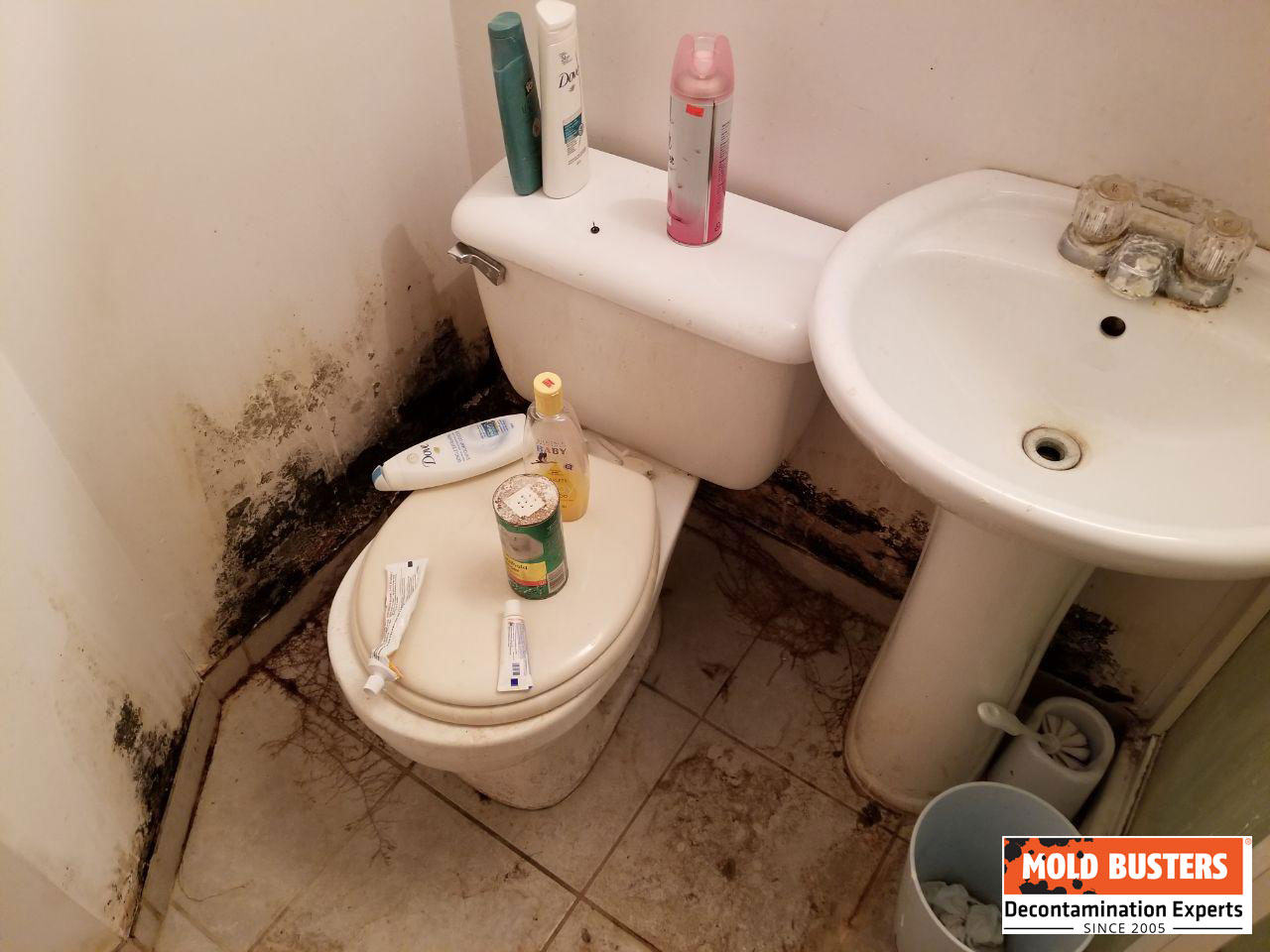
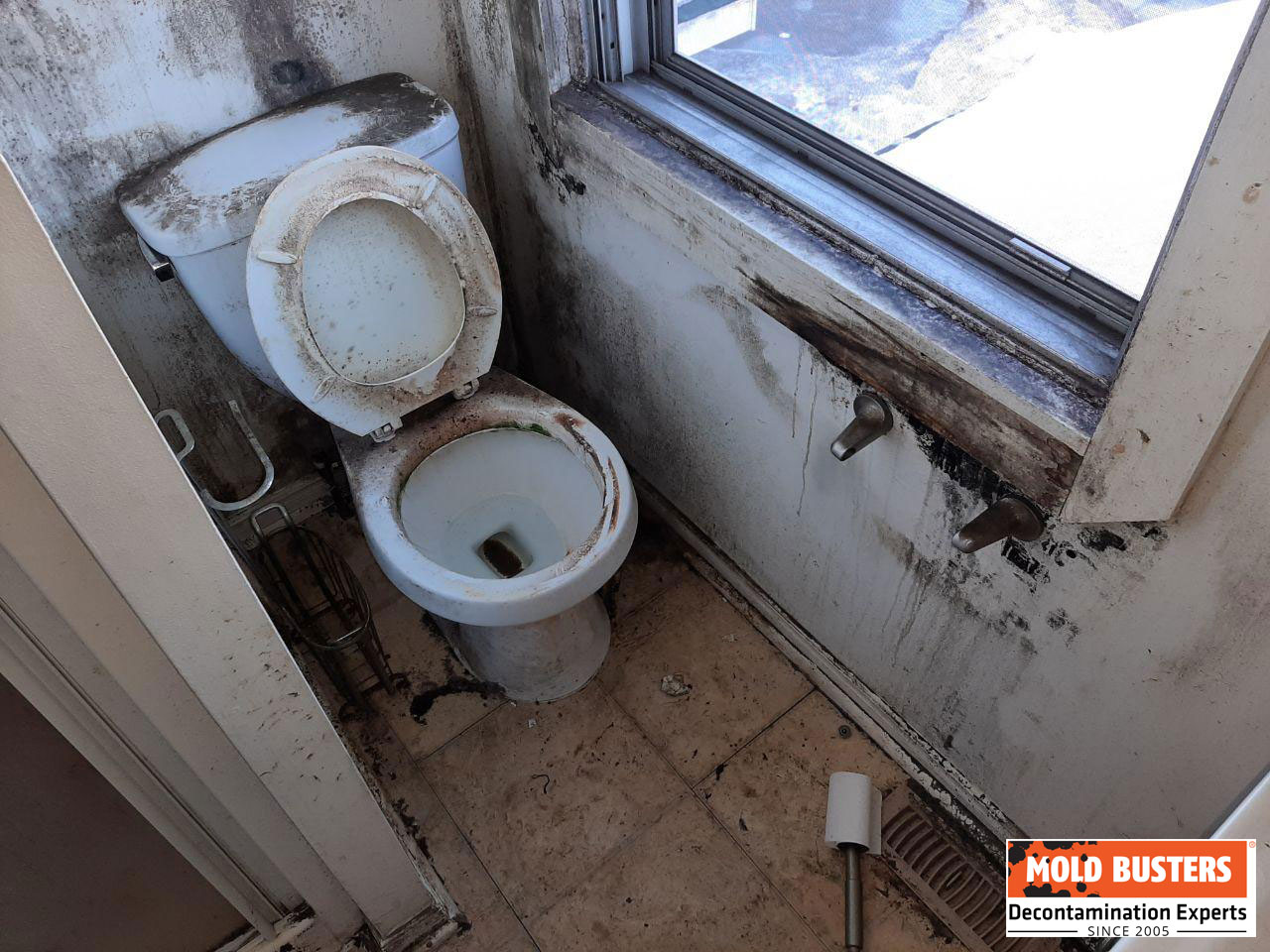
How to identify mold in the toilet
Anxiety kills, don’t hurt yourself before mold strikes. You will probably exclaim on sighting brown discoloration in your toilet, but how will you justify the appearance as mold? Therefore, before you start to look for a way of eradicating that ugly appearance in your toilet rim, bowl, or tank, you first need to confirm that it is mold.
Mold testing is the only accurate method of confirming the presence of mold in your home. It helps over guesswork, and you will be sure you are dealing with mold. You should test your toilet and home early to prevent mold from spreading and causing harm to your family.
How to prevent mold growth in the toilet
For peace of mind over mold in your toilet, preventing the spores from spreading is the ideal thing you should do. The following tips will help you prevent mold growth in your toilet.
- If your toilet has a window, always open it for ventilation or leave your exhaust fans to refresh the air after using the toilet.
- Always flush and avoid leaving waste sitting in your toilet.
- Do a thorough toilet cleaning at least once a week.
- Add vinegar to your toilet tank two to three times a week.
- Infrequently used toilets should be flushed at least every other day.
The Importance of Fixing Things
If you notice mold growing around plumbing parts or if you have a leak that’s causing excess moisture, fixing things promptly can prevent further mold growth. Don’t leave waste sitting in your toilet for long periods, as this can also contribute to mold growth.
Mold in Toilet Bowl Keeps Coming Back
If mold keeps returning to your toilet bowl, it may be due to persistent dampness, a lack of ventilation, or a need for more frequent cleaning. Consider increasing the frequency of your cleaning routine and using a mold-preventing solution. If the problem persists, it may be worth consulting a professional.
How to Remove Mold from Your Toilet
Mold in your toilet can be a persistent problem, but with a little elbow grease and the right tools, you can get rid of it. Here’s a step-by-step guide:
What You’ll Need
- Baking soda
- Distilled white vinegar
- Spray bottle
- Scrub brush or steel wool
- Rubber gloves
- Duct tape (optional)
- Steam cleaner (optional)
The Process
- Preparation: Put on your rubber gloves. This is important as cleaning mold can expose you to spores which can be harmful.
- Baking Soda and Vinegar: Sprinkle baking soda all over the moldy areas in your toilet. Then, fill a spray bottle with distilled white vinegar and spray it over the baking soda. Let the toilet sit for less than one hour. This natural solution is a great way to tackle the mold problem.
- Scrubbing: After letting the vinegar and baking soda sit, use a scrub brush or steel wool to scrub away all the mold. Be sure to get any remaining mold spots.
- Rinse and Dry: Rinse the toilet with water to wash away the mold and cleaning solution. Then, dry the toilet thoroughly to remove excess water, as moisture can contribute to more mold growth.
- Deep Clean (Optional): For a deep clean, consider using a steam cleaner. This can help remove any stubborn mold that’s still present.
- Prevention: To stop mold from coming back, clean your toilet regularly. You can also use preventative tablets in your toilet’s water supply.
Remember, proper ventilation in your bathroom can also help prevent mold growth. If you’re dealing with a serious mold problem, you may want to consider professional mold removal services.
How to Remove Mold from Toilet Bowl
To remove mold from your toilet bowl, first turn off the water and flush to empty the bowl. Apply a mold-killing solution, let it sit for 15-20 minutes, then scrub vigorously with a toilet brush. Once you’ve removed the mold, turn the water back on and flush to rinse.
Natural Solutions for Mold Removal
If you prefer natural solutions, baking soda and distilled vinegar can be effective for cleaning mold. You can also consider using anti-fungal sprays made from natural ingredients.
You already know that mold spores are everywhere in the air. Eradicating that visible mold does not mean you have completely got rid of mold in your home. Therefore, cleaning mold with bleach and vinegar in your toilet will still leave the spores floating in the air.
Because of the potential health risks associated with mold, you need to remove it urgently. With that said, you need a certified mold remediation service to help you with the removal. However, be careful when hiring services that care only for your hard-earned money.
Hiring Mold Busters makes mold remediation in your toilet easy. We start by testing the air sample in your home because it is what you breathe in every day. Then, we will frankly tell you if what is in your toilet is mold or not. If it is, we are always available to help.
Call us today, and let’s discuss that mold issue in your home!
Frequently Asked Questions (FAQs)
Why is there mold in my toilet bowl?
The toilet bowl is a prime breeding ground for mold due to humidity and darkness. You will find mold growing in this area of your toilet if you have been away for a while and the toilet is left unused. Leaving waste in the bowl for a long time can also trigger mold growth.
How can I keep mold from growing in my toilet bowl?
Make sure it is always clean, flush whenever you use it, and ensure there’s a good source of ventilation in your toilet.
How to get rid of black mold under my toilet rim?
You can use a commercial toilet cleaner that contains disinfectants. However, such a cleaner will only get rid of black mold under your toilet rim. The spores still exist in the air.
Can I flush mold down the toilet?
Flushing mold down the toilet may or may not completely eradicate the mold. Even if it does, flushing does not eliminate the mold spores in the air of your home.
Can urine cause mold in the toilet?
Frequent mold in your toilet could be a sign that you have high levels of sugar in your urine, known as diabetes. While no scientific studies are supporting this claim, urine is likely to cause mold in the toilet. A consistent buildup of mold in your toilet could mean a member of your family could have poorly managed or undiagnosed diabetes.

Get Special Gift: Industry-Standard Mold Removal Guidelines
Download the industry-standard guidelines that Mold Busters use in their own mold removal services, including news, tips and special offers:
Published: October 29, 2021 Updated: June 10, 2024

Written by:
John Ward
Account Executive
Mold Busters
Fact checked by:
Michael Golubev
CEO
Mold Busters

